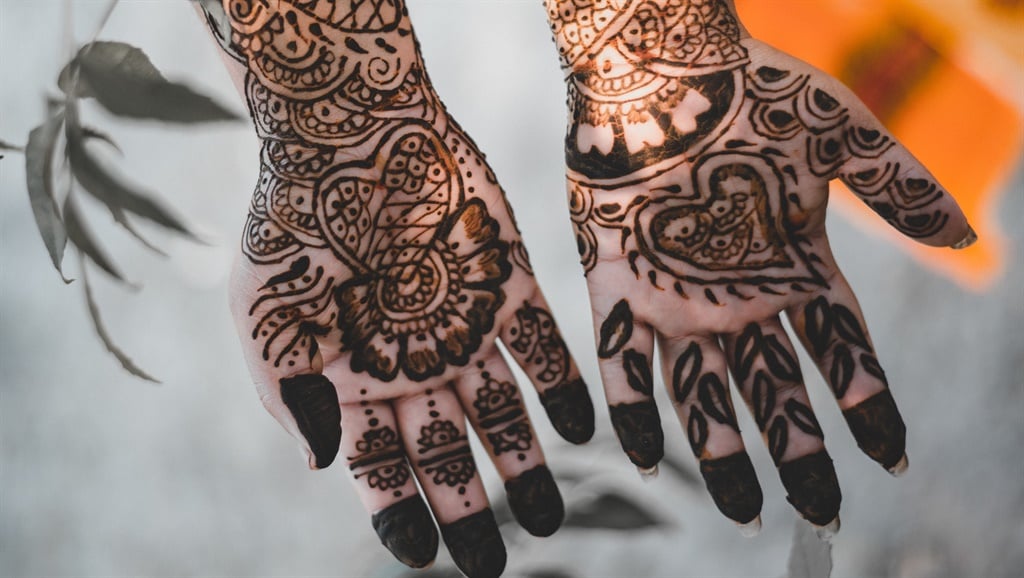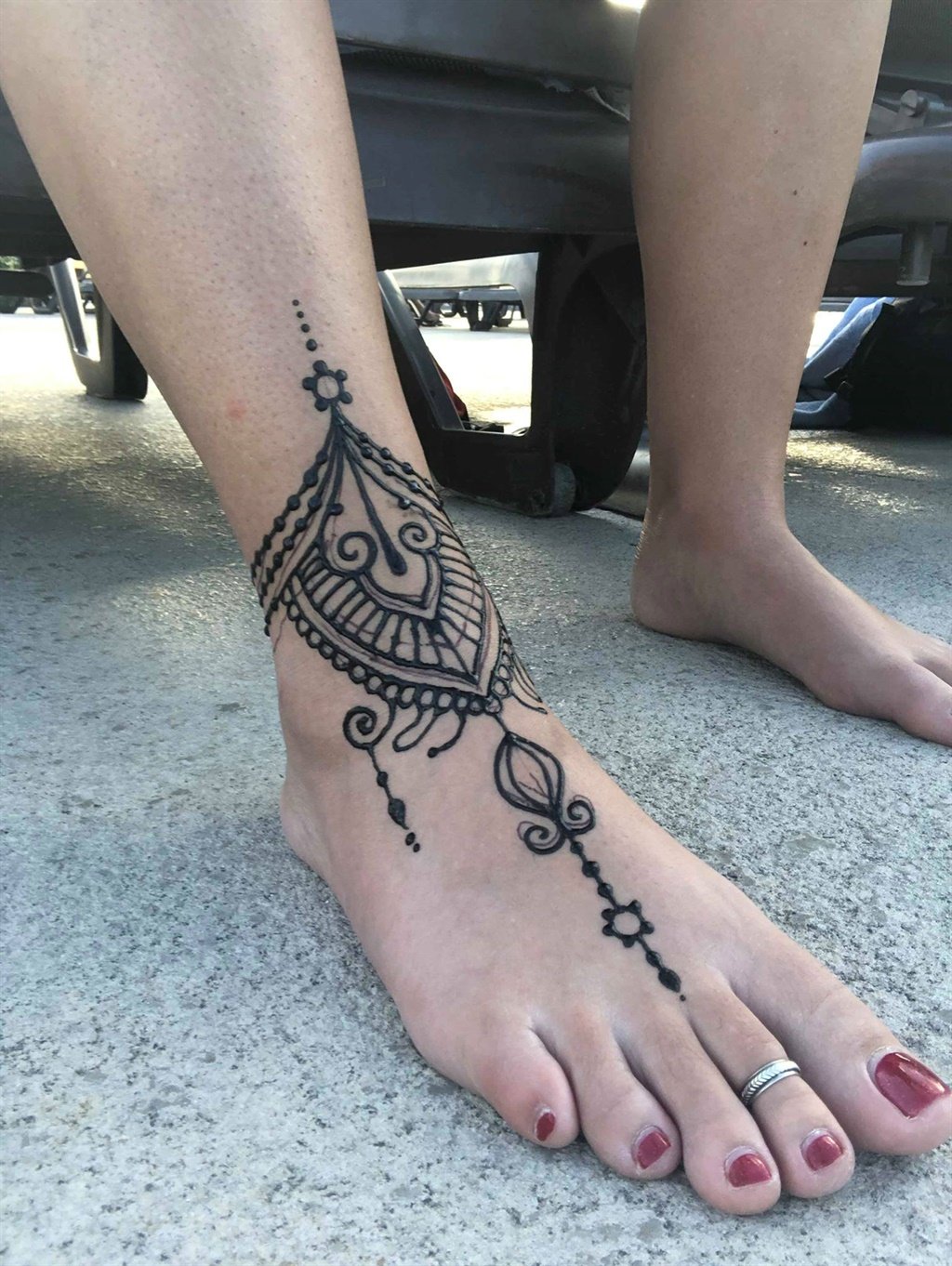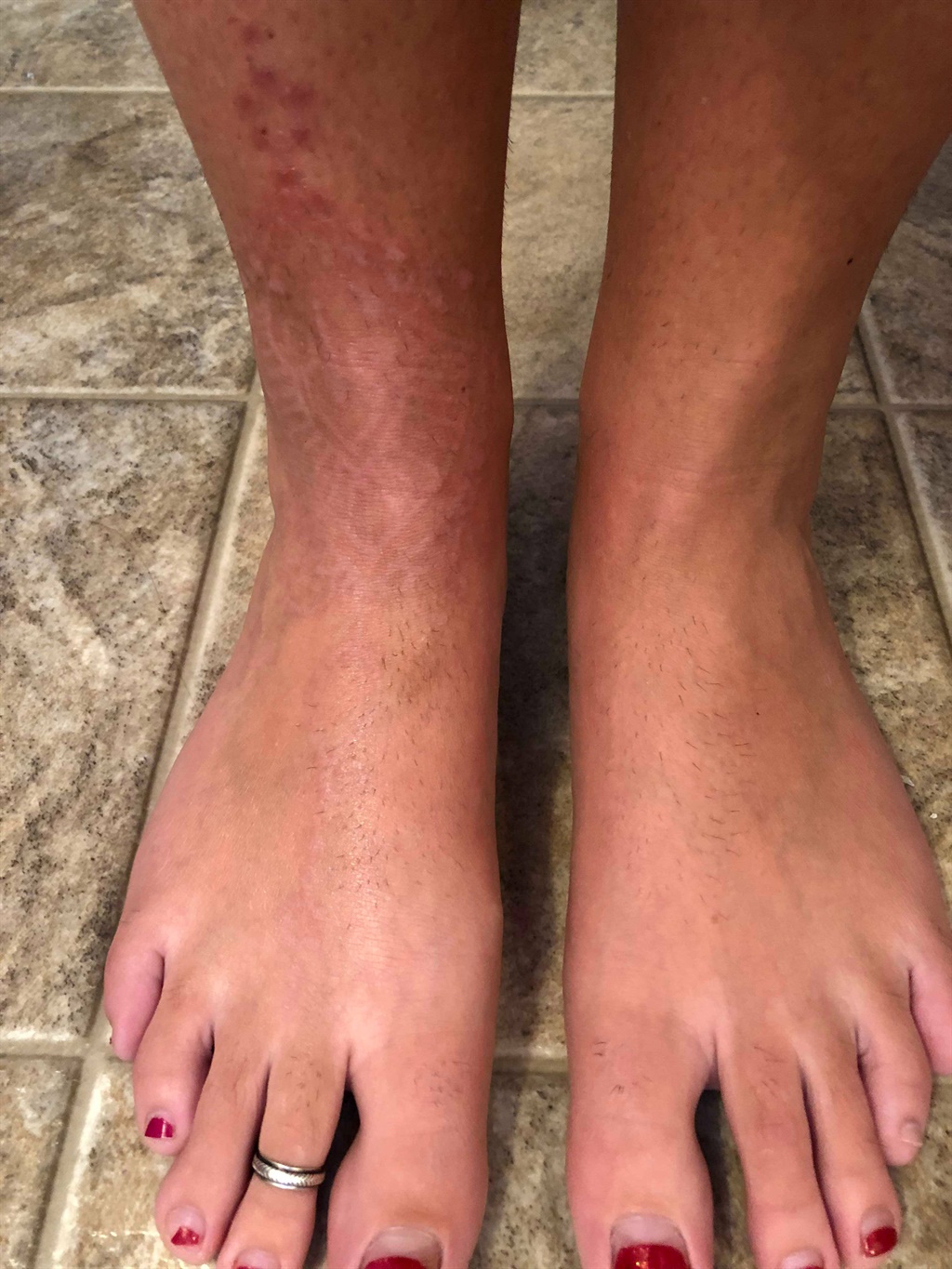
A shocked woman has revealed the henna horror she suffered after a holiday tattoo left her scarred and in hospital.
Rachel Major, 28, was on holiday in the Dominican Republic, Caribbean, when she decided to get a henna tattoo on her right ankle from a stall nearby.
Delighted with the initial result, the real estate agent had no problems with her $10 [R153] black henna tattoo until it started itching ten days after it was done.
Then, over the course of the next week, Rachel's temporary tattoo started to blister and swell - worsening to the point where she had trouble walking and had to be rushed to hospital for treatment.
READ MORE: Rwanda bans skin lightening products
Rachel, from Michigan, U.S., is sharing her story to encourage others to avoid having holiday henna as it has left her currently scarred and recovering from the pain.
She said, "I had never had henna done before, so when I saw the stand I thought I would get it done to make my foot look pretty whilst wearing sandals on the beach.
"I saw lots of other people getting their henna done from this stand, so thought it would be fun. When I first had it done I loved the result and it seemed fine for the first nine days - it wasn't until the tenth day that it became very itchy.
"After that the itching didn't stop and it started blistering and swelling and would burn every time I walked, making it hard for me to walk at times. When it got too much I went to the urgent care unit at the hospital and was prescribed two different types of medication and a cream, which helped everything go down, but the scar still remains.
"It was the worst decision I have ever made and would never get henna again - and wouldn't advise anyone else to in case their skin reacts the same!"
She says, "It definitely wasn't worth what I went through for the promise of a couple of weeks of a pretty tattoo."
But Rachel's case is not the first case of someone experiencing a skin reaction due to black henna.
Reporting the worst case of a henna reaction, the BBC shared the story of Julia McCabe, a woman who died in 2012 as a result of a reaction to black henna and hair dye.
The news outlet reported that “the inquest into her death found that she had had a black henna tattoo on holiday five years earlier, which had made her allergic to dye. After that she had carried on using hair dye, but it started giving her rashes. Eventually, the dye caused a serious anaphylactic shock that killed her”.
Durban-based henna artist Zakiyya Mansoor says for these reasons she prefers to strictly use natural henna. Having practiced henna art and studied its cultural contexts for 18 years, the self-taught artist says natural henna can be identified by its consistency and how long the paste is kept on.
She says natural henna is a paste made from leaves from the henna plant that creates a red, orange or brown stain on the skin and lasts for about one to two weeks – and conceded black henna can have adverse effects on your skin and doesn’t recommend people use it.
“I always say even if you use the [black henna] this year and you’re fine with it, next year you could still get a reaction,” says Zakiyya.
For your own safety she says it's best to stick to 100% natural henna, which is what she uses at her practice.
READ MORE: WATCH: The ugly side of Korean beauty
While it may be difficult to spot the difference, Zakiyya says there are ways to know if the henna used on you is natural or not. She says this is what you can look out for:
1. Natural henna has to be stored in the freezer to maintain its shelf life, if it's stored elsewhere it's likely to be chemically enhanced
2. The main difference between natural henna and chemical henna is that natural henna has to be kept on for at least six hours, the henna that’s chemically enhanced can peel off after 10 minutes.
“I know a lot of people who want [chemically enhanced henna] for their children, they feel that their kids can’t stay with henna for that long but that’s even worse because if I wouldn’t do it on myself I really wouldn’t want to do it for a young child,” says Zakiyya.
3. Chemical henna has a glossy paint look while natural henna is similar to mud and is a paste and not paint.
“I had a situation a few years back where a bride wanted to be inked with henna and I couldn’t help her. She did it [elsewhere], and on her honeymoon she broke out into scars. She messaged me to ask what to do, obviously I couldn’t help her because she had to seek medical attention.”
Additional reporting by Mollie Mansfield
All images by Magazine Features
What experiences have you had with henna body art? Chat to us here.
Follow us on social media here: Facebook, Twitter, Instagram
Sign up to W24’s newsletters so you don't miss out on any of our stories and giveaways.




 Publications
Publications
 Partners
Partners













